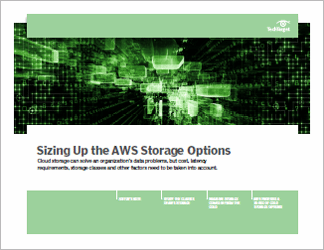PRO+ Premium Content/E-Handbooks
Access your Pro+ Content below.
With Amazon cloud storage, know what's in store


Sponsored by TechTarget Search AWS
Amazon cloud storage comes in a variety of shapes and sizes. There's Amazon Simple Storage Service (S3), Glacier and Elastic Block Store (EBS), among others. Which is right for your organization -- and in which uses? And what else is on the market? An Amazon S3 instance, for example, might be right for one task, but not another.
This handbook outlines the various AWS services and compares them to storage offerings from other cloud service providers, including Microsoft and Google. It offers guidance on how to determine which types will meet particular needs, be it an application that is highly sensitive to latency or data that is archival in nature. You'll want to consider how AWS pricing and features will stack up against similar services -- both from AWS and from competing providers. The Amazon S3 choice, for example, might be perfect for one task, but all wrong for another. Another option is cold storage, which, while much less expensive, is something you'll want to use only for specific types of data.
To make good decisions, an organization will need to evaluate the Amazon cloud storage options based on cost, latency, retrieval demands and other variables. Balancing those factors should lead to the right mix of services without putting undue strain on IT budgets.
Table Of Contents
- Study the classes of AWS storage
- Nearline storage comes in from the cold
- AWS provides a range of cold storage options




